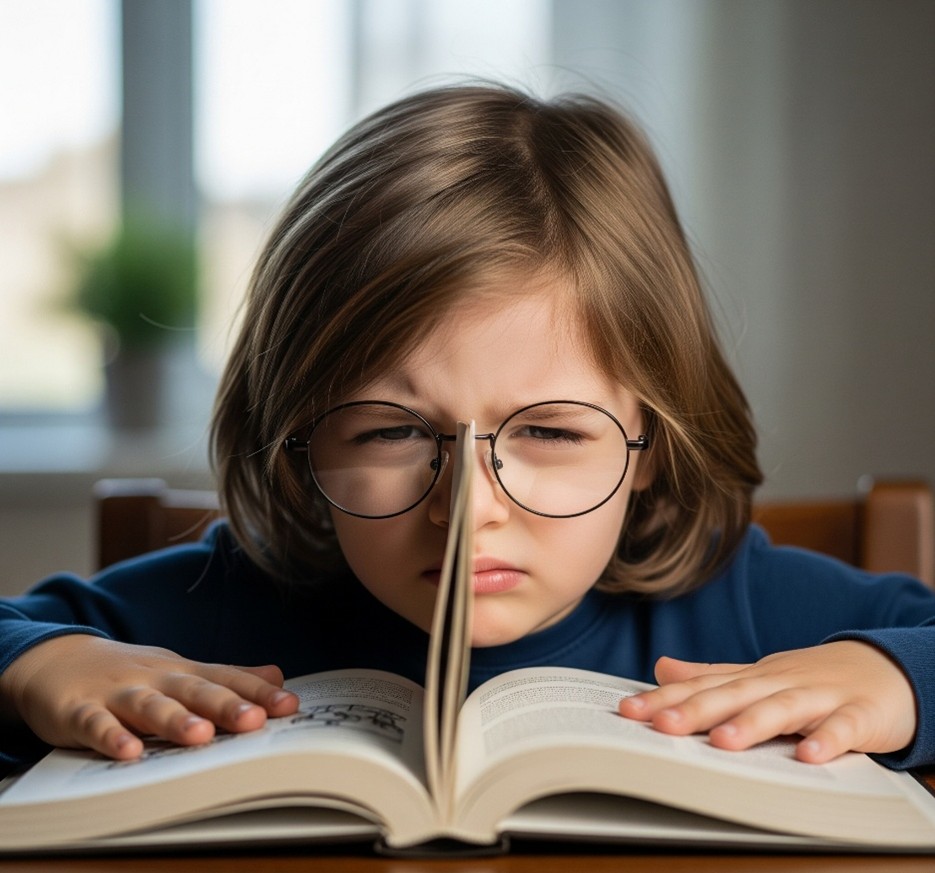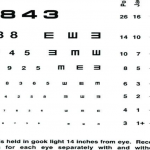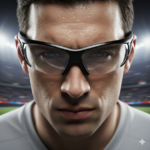Clear Vision, Bright Future: Signs Your Child May Need Glasses
As a parent, ensuring your child’s health and well-being is always a top priority. You make sure they’re eating well, staying active, and doing their best at school. However, one crucial yet often overlooked area of your child’s development is their vision. Good eyesight forms the foundation for learning, social interaction, and everyday life skills. Unfortunately, many children struggle with undiagnosed vision problems, and because kids don’t always recognize or report that they’re seeing differently, these issues often go unnoticed.
When children can’t see clearly, learning becomes difficult, sports feel frustrating, and social experiences may be negatively affected. The challenge is that children rarely say, “I can’t see well,” because they assume that everyone sees the world the same way they do. This makes it vital for parents to be aware of the warning signs that may indicate their child needs glasses. Detecting these signs early and seeking professional help can make a huge difference in preventing academic delays and supporting healthy development.
Common Behavioral Signs
One of the most noticeable behaviors that may suggest vision difficulties is squinting. When a child squints, they are trying to improve clarity by altering how light enters their eyes. This is often seen when they watch television, look at the classroom board, or attempt to focus on distant objects. Squinting usually points to refractive errors such as nearsightedness (myopia) or astigmatism. Head tilting or covering one eye is another important behavioral clue. Children sometimes tilt their head to compensate for the way their eyes work together, particularly if one eye is weaker or
misaligned. Covering one eye, especially while reading or watching TV, is worrisome and may signify amblyopia (lazy eye) or strabismus (crossed eyes) conditions that demand prompt attention from an eye care professional. Another habit that often reveals vision issues is sitting very close to screens or holding objects unusually close to the face. If your child consistently brings books, tablets, or toys close to their eyes, it may suggest that they struggle to see clearly at normal viewing distances. This is most commonly linked with myopia, which now affects children worldwide at increasing rates due to prolonged near work and screen exposure.
Physical Symptoms That Point to Vision Problems
Alongside behaviors, certain physical symptoms also signal that your child may have eyesight difficulties.
One of the simplest early signs is frequent eye rubbing, especially when reading or doing close-up activities. While occasional rubbing may result from tiredness or allergies, persistent rubbing often indicates strain from the eyes working harder than normal to focus.
Children might also complain about headaches or eye pain, particularly after school, during homework, or after extended periods of screen use. These headaches are usually concentrated around the forehead or eyebrows and are a result of uncorrected refractive errors such as farsightedness or astigmatism. When eyes need to exert excessive effort to see clearly, the muscles tire, producing headaches or a feeling of discomfort.
Another overlooked warning sign is excessive tearing without an obvious cause. While watery eyes are often associated with allergies, blocked tear ducts, or irritation, unexplained tearing can also occur when the eyes are straining to maintain focus.
Academic and Learning Challenges
Vision plays a central role in learning, with up to 80% of classroom education involving visual tasks. Children who can’t see properly often appear to be inattentive or unmotivated, while the real issue is that their blurred or double vision is interfering with learning.
If your child has undiagnosed vision problems, you might notice:
Difficulty concentrating on reading or writing tasks
Short attention span during schoolwork
Avoidance of reading altogether
Poor comprehension compared to peers
Frequently losing their place while reading a passage
Complaints that printed words appear blurry or move around on the page
In some cases, children with untreated vision issues are even misdiagnosed with ADHD because they appear restless or disengaged. The truth is, if a child is struggling to see clearly, focusing on academic tasks becomes exhausting and frustrating. A pair of glasses can sometimes transform a
child’s ability to engage in school, leading to significant improvements in performance and confidence.
Motor Skills and Coordination
Vision challenges don’t only affect academics—they also impact motor development and everyday coordination. Children rely on their eyes to guide their hands and bodies, whether they’re learning to catch a ball, riding a bicycle, or simply navigating their environment. If your child has noticeable clumsiness, bumps into things frequently, fumbles during sports, or struggles with hand-eye coordination, vision issues may be at the root. Poor depth perception or blurred vision diminishes their ability to track moving objects, affecting performance in activities like football, cricket, or basketball. These skills are essential not just for physical development, but also for building self-esteem and confidence in group play.
Age-Specific Warning Signs
Vision problems can look quite different depending on your child’s age.
In toddlers and preschoolers, watch for:
Excessive squinting or screwing up the eyes to focus
A lack of curiosity in picture books or visual games
Trouble recognizing familiar faces or objects across a room
Eyes turning inward or outward, even just occasionally
In school-aged children, additional warning signs may appear:
Relying on a finger to follow lines when reading
Frequently skipping words or sentences while reading aloud
Complaining of double vision after long periods of near work
Difficulty copying lessons from the blackboard
Falling behind peers not because of comprehension issues, but because of visual strain
Struggling in sports requiring quick reflexes and sharp vision
By recognizing these age-related signs, parents can intervene before vision issues begin to cause
lasting learning or developmental setbacks.
When to Seek Professional Help
The American Optometric Association (AOA) recommends eye exams starting at 6 months, again at age 3, and annually beginning at school age. Even if your child seems not to complain, regular checkups are important because only a professional exam can rule out silent vision issues. If you observe any of the warning signs described earlier, don’t wait until the next scheduled visit. Schedule a comprehensive eye examination right away. Modern pediatric optometry uses advanced techniques that allow eye doctors to check vision accurately in very young children who cannot yet read letters or clearly express what they see.
The Importance of Early Detection
Children are incredibly adaptable. If their vision is impaired, they may simply find coping mechanisms—such as tilting the head, squinting, or avoiding reading. Unfortunately, these adaptations mask the underlying problem and delay diagnosis. Left untreated, conditions like
amblyopia (lazy eye) become harder to correct with age. Early diagnosis and treatment—whether with glasses, eye exercises, or medical therapy—can dramatically improve not only vision but also a child’s academic, athletic, and social development. Clear vision builds confidence, motivation, and a readiness to explore the world.
Take Action
As a parent, you are on the front line of detection when it comes to vision. By staying observant of behavioral cues, physical symptoms, and school performance, you can catch problems before they cause deeper struggles.
If you’ve noticed that your child squints, rubs their eyes often, gets headaches after reading, sits too close to screens, or avoids schoolwork, it’s time to schedule an eye examination. The earlier vision problems are addressed, the sooner your child can reach their fullest potential—academically, athletically, and socially. Glasses are not just corrective lenses; they are tools that can empower your child to see the world clearly and chase their dreams without unnecessary obstacles.
PREVENTION IS BETTER THAN CURE










